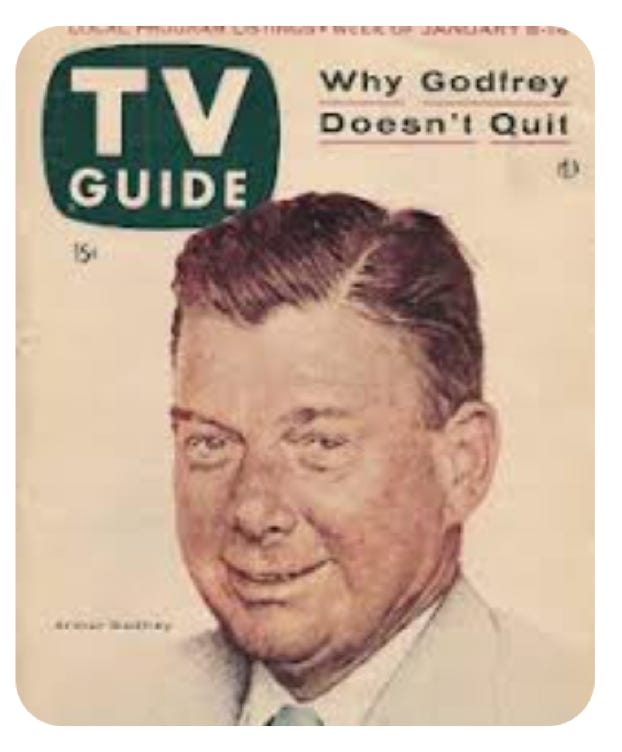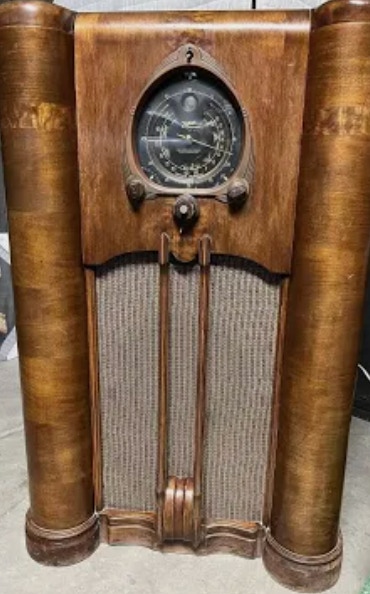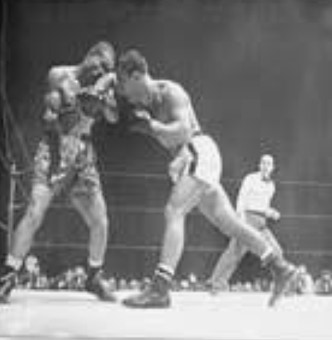
7
Dad wanted absolutely to not have the newfangled TV contraption sitting in our house. He was perfectly content with our state of the art 1938 Zenith radio, and I have to admit the cabinet was a majestic piece of craftsmanship to behold and the electronics produced superb audio quality. By 1952 programming had become so well refined that, to advertisers delight, listeners found it was hard to resist. The more popular broadcasts included "The Lone Ranger", "Perry Mason", "Dragnet",“Gunsmoke”, "The Jack Benny Program”, The George Burns and Gracie Allen Show”, "I Love Lucy", "The Adventures of Superman", "The Adventures of Ozzie and Harriet", "Guiding Light”, “Amos and Andy”, “The Shadow”, “Fibber McGee and Molly”, and “The National Barn Dance”. Toss in a constant flux of sports programming and there was something for everyone to love.
Dad wasn’t the only one who found TV resistible. The list price for a 1952 Dumont model 30T380 was $1,795 which was almost precisely 1/2 the average American family’s annual household income at the time. A TV set was more than 5 times the price of top grade radio. Then, of course, you also needed an antenna. While rabbit ears worked fine near the urban broadcast towers, In rural areas antenna meant an expensive monstrous gizmo planted on top of the roof or an even more expensive stand-alone tower. Also a clunky remote controlled rotor was needed to precisely aim the antenna for best reception.
That first TV broadcast I ever saw was the October 26, 1951 Joe Louis vs Rocky Marciano match. It lasted into the 8th round whereby Joe caught a left hook followed by an overhand right that sent him into La-la land. The picture was snowy and the horizontal and vertical controls required constant readjustment, but the FM sound was good making it possible to keep up with the action. Our host had invited several other neighborhood friends and had folding chairs set up directly in front of the set for the male members to sit and watch the fight while the unliberated June Cleavers fixed refreshments in the kitchen. Meanwhile us tag-along kids were left alone to entertain ourselves - mostly running wild throughout the house in a make-shift game of cops and robbers or cowboys and Indians - I’m not sure which - or that it mattered. What I am sure of is, that at the end of the proceedings Dad was even more unimpressed with the TV thing. But that all changed abruptly only a few weeks later when it was announced that the Illinois Fighting Illini would be participating in the first ever televised Rose Bowl game. Then it became incumbent that we own a TV.
Most of the programs we enjoyed listening to on the radio had already begun also broadcasting on TV. Even though we had a set in the living room awaiting the Rose Bowl, Dad was reluctant to make the transition from radio to TV and insisted we listen to “The Lone Ranger” on the Zenith rather than watch the televised version. But Dad was seldom home during the day, and Mom, more receptive to change, thought It would not damage our impressionable young minds if we were allowed to listen to Miss Frances ring her bell to commence a session of “Ding Dong School” or Buffalo Bob banter with “Howdy Doody”.
Mom was a big fan of Arthur Godfrey whom she alternately watched on TV, or if too busy, listened to the simulcast on the radio. There were times when Arthur was radioing in the kitchen and televising in the living room simultaneously. It was a bit confusing in the dining room where you could hear both because the audios were not perfectly in sync with one another.
Arthur was an early and strong supporter of the civil rights movement and was not shy about letting it be known on his broadcasts. He was an advocate of desegregation and sharply criticized Senator Talmadge when Talmadge remarked, ”He would sooner end public education in Georgia than allow Black children to attend school with white children.”
What had gotten the Georgia Senator’s shorts in a bind was that a sacred pillar of Southern culture, segregated public education, was being attacked in the courts. Brown vs Board of Education of Topeka was working its way up to the Supremes, and Plessy v. Ferguson, a legal case decided in 1896 in which the US Supreme Court put forward the controversial “separate but equal” doctrine, was in danger of being overturned.
Jim Crow’s days were numbered. Senator Talmadge knew it and was having nightmares of Black boys sitting next to White girls in the cafeteria and maybe even holding hands. HORRORS! The Reverend Martin Luther King knew it and was dreaming dreams that “one day right there in Alabama little black boys and black girls will be able to join hands with little white boys and white girls as sisters and brothers.” Bobby Zimmerman knew it. “The times they Are a-Changin.” Arthur Godfrey knew it and was doing his part through his broadcasts to enlighten his audience to accept change. .


